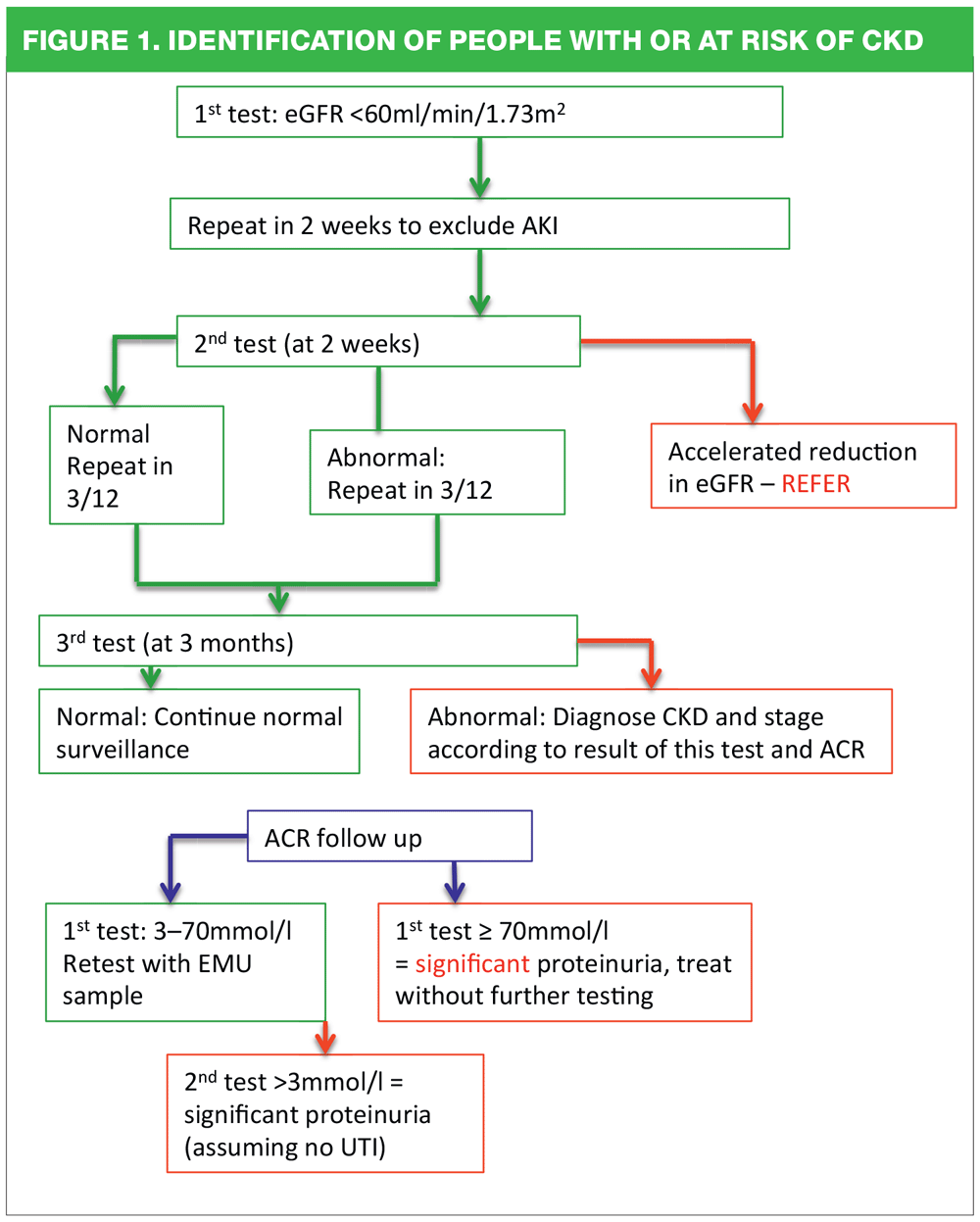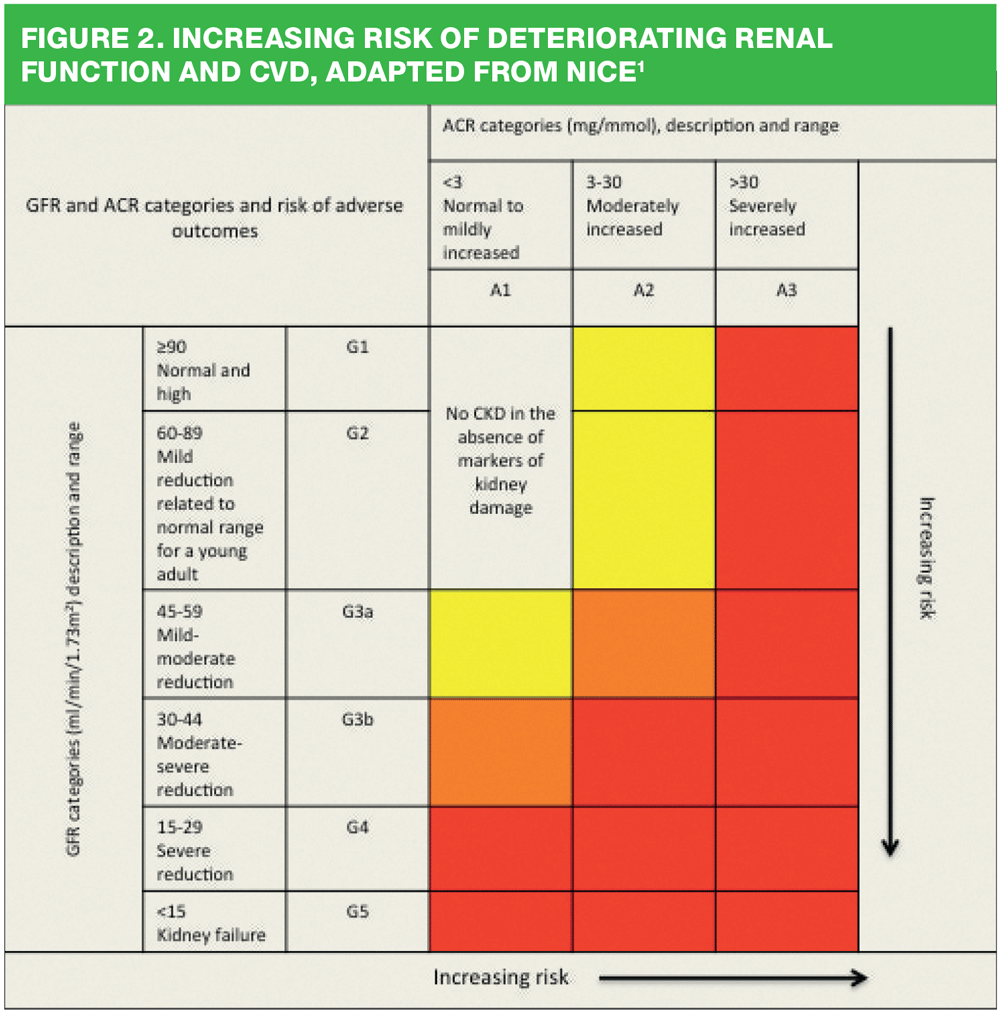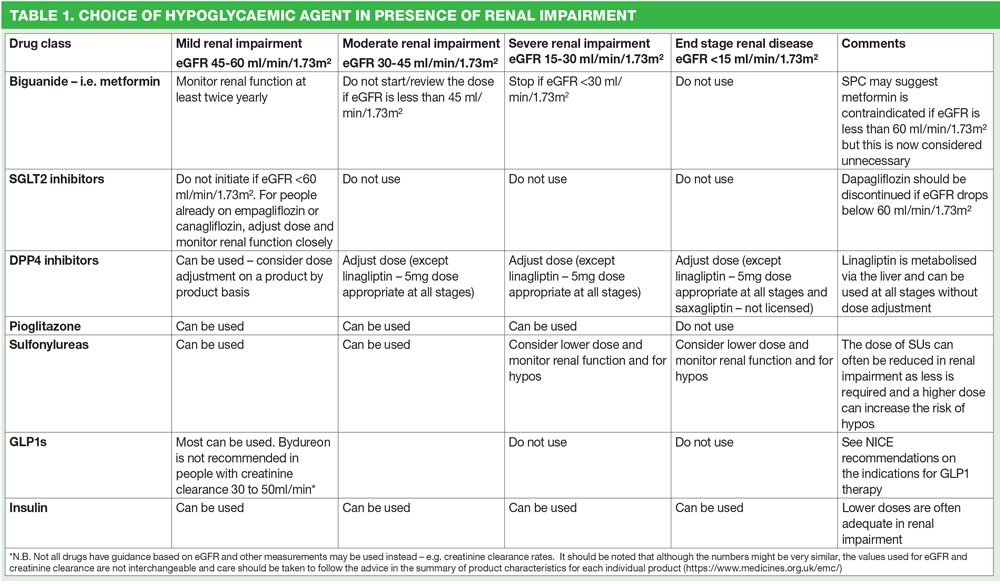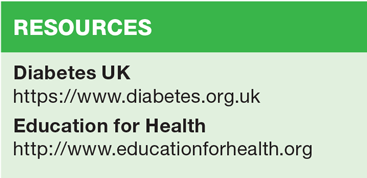Managing type 2 diabetes in renally impaired patients
Beverley Bostock-Cox
Beverley Bostock-Cox
RGN MSc QN
Nurse Practitioner Moreton in Marsh
Education Lead, Education for Health Warwick
The prevalence of type 2 diabetes (T2D) is increasing as the population of the United Kingdom gets heavier and becomes less active. As a result, more and more nurses – and GPs – will be involved in managing more complex patients who might previously have been seen in secondary care clinics. These patients might include those with co-morbidities such as renal impairment and chronic kidney disease (CKD). The aim of this article is to identify how to diagnose CKD and recognise its impact on the ongoing management of both the diabetes and the renal impairment.
By the end of this article you should:
- Be able to identify the factors that lead to the development of CKD
- Understand how to diagnose renal impairment and stage CKD in line with NICE guidance1
- Be aware of how CKD impacts on the management of glycaemic control
- Recognise the importance of renal impairment as an indicator of cardiovascular risk
TYPE 2 DIABETES AND RENAL FUNCTION
Diabetic nephropathy is a complication of both type 1 and type 2 diabetes.2 The pathological changes of diabetic kidney disease result from a combination of hyperglycaemia, dyslipidaemia and hypertension – both systemic hypertension and raised arterial pressure within the kidney itself (glomerular hypertension).2 These factors are also known to increase cardiovascular risk and indeed other aspects of cardiovascular disease (CVD) pathophysiology are thought to influence the development of diabetic kidney disease, specifically endothelial dysfunction and oxidative stress.3 This means that when someone with diabetes is diagnosed with CKD, the aim should be to improve outcomes from both a renal and a cardiovascular perspective.
People with diabetic kidney disease (DKD) have all the features of CKD plus a diagnosis of diabetes and, almost invariably, hypertension. On ultrasound scan people with DKD often have normal sized kidneys, whereas most other forms of kidney disease lead to renal atrophy. All of these features can distinguish people who have DKD from those with non-diabetic CKD.
DIAGNOSING CKD AND DKD
The diagnosis of renal impairment is made on the basis of abnormal blood and/or urine tests. A blood test can identify the estimated glomerular filtration rate (eGFR) and this, along with a urine test that measures the albumin creatinine ratio (ACR) can help to identify people with or at risk of chronic kidney disease (CKD) (Figure 1). Figure 2 explains how the results of each test are combined to give an indication of the increasing risk of both deteriorating renal function and CVD.
Care should be taken to repeat abnormal tests in order to a) ensure that any change is sustained and not transitory and b) identify the presence of acute kidney injury (AKI) which will require more urgent intervention. Thus it is important that an abnormal eGFR is recorded twice, at least 3 months apart, to confirm the diagnosis of renal impairment. If a reduced eGFR (less than 60ml/min/1.73m²) has been recorded for the first time, a repeat test should be carried out within 2 weeks to exclude AKI.
THE IMPACT OF RENAL IMPAIRMENT ON MANAGING BLOOD GLUCOSE
NICE guidelines for managing T2D recommend a strategy for blood glucose control which focuses on the use of metformin first line, followed by a choice of SGLT2 inhibitors, DPP4 inhibitors or pioglitazone at first intensification.4 If a combination of two drugs does not achieve adequate blood glucose control then a third agent should be added, which NICE suggests could be a sulfonylurea. NICE states that injectables may be added if control has not been achieved with three oral hypoglycaemic agents although they may be initiated at any stage of the process as indeed can insulin. Good control is defined as an HbA1c of 53mmol/mol albeit this should be tailored to each individual and may sit anywhere between 48 and 58mmol/mol.4 Renal impairment will have a significant impact on the choice of hypoglycaemic agent as shown in Table 1.
RENAL IMPAIRMENT AND THE RISK OF CARDIOVASCULAR DISEASE (CVD)
The majority of people with diabetes and CKD will also have hypertension. Hypertension can worsen CKD and vice versa so it is important to treat blood pressure effectively. ACE inhibitors are known to have a positive effect on the kidneys and offer renoprotection so these are often the first choice therapy when treating people who have diabetes, CKD and/or CVD.5
NICE CKD guidelines1 state that unless contraindicated, an ACE inhibitor or an angiotensin receptor blocker (ARB) should be offered to all people with CKD and diabetes who have an ACR of 3 mg/mmol or more (ACR category A2 or A3) and/or those who have hypertension and an ACR of 30 mg/mmol or more (ACR category A3) – bear in mind that many people with diabetes will fall into this category. The dose of medication may need to be adjusted (up or down) depending on the stage of CKD and/or response to therapy.
However, many people will need more than one antihypertensive drug to get their blood pressure to target so the combination of an ACE inhibitor or ARB with a calcium channel blocker can be used. If this does not get the patient to target (130/80 in people with diabetes and kidney disease) then a third drug, normally a thiazide diuretic, would be added.6
The evidence for the role of dyslipidaemia in people with CKD is less clear. However, those people with T2D who have a CVD risk (as assessed by QRisk) of 10% or more will be advised to take a statin anyway. Renal impairment should not be a barrier to lipid lowering therapy and both statins and ezetimibe have good evidence for improving outcomes in high risk patients as well as being safe to use in CKD.7,8
Antiplatelets (e.g. aspirin 75mg) should be considered in people with CKD as a secondary prevention measure although the risks (particularly the bleeding risk) and benefits should be addressed for each individual patient before initiating treatment.1,4
Lifestyle interventions are always the key to reducing CVD risk, both in the general population as well as those people who have diabetes, so advice and support should be offered on the benefits of weight management, healthy eating, an active lifestyle and avoiding smoking.
CONCLUSION
In summary, people with diabetes are at increased risk of CKD when compared with the general population. The combination of diabetes, hypertension and CKD increases the potential for people to develop CVD and/or end stage renal disease. Blood pressure control using angiotensin blocking agents (ACE inhibitors and ARBs) and other blood pressure and lipid lowering therapies as required will help to protect people with diabetes from both of these complications. Lifestyle interventions will offer additional benefit and improve risk reduction. In people with CKD, care should be taken when initiating, intensifying or adjusting medication, specifically those used to reduce blood glucose levels as licenses vary even within drug classes.
REFERENCES
1. NICE CG182. Chronic kidney disease in adults: assessment and management, 2014 (updated 2015). https://www.nice.org.uk/Guidance/cg182
2. Marshall SM. Natural history and clinical characteristics of CKD in type 1 and type 2 diabetes mellitus. Adv Chronic Kidney Dis 2014;21(3):267-72.
3. Cheng H, Harris RC. Renal endothelial dysfunction in diabetic nephropathy. Cardiovasc Hematol Disord Drug Targets 2014;14(1):22-33.
4 NICE NG28. Type 2 diabetes in adults: management, 2015 (updated 2016) https://www.nice.org.uk/guidance/ng28
5. HOPE Study Investigators. Effects of ramipril on cardiovascular and microvascular outcomes in people with diabetes mellitus: results of the HOPE study and MICRO-HOPE substudy. Lancet 2000;355: 253-59.
6. NICE CG127. Hypertension in adults: diagnosis and management, 2011. https://www.nice.org.uk/guidance/cg127
7. Mayor S. Cochrane review questions evidence for statins for primary prevention in low risk groups BMJ 2011;342:d480
8 Cannon CP, Blazing MA, Giugliano RP, et al, for the IMPROVE IT Investigators. Ezetimibe added to statin therapy after acute coronary syndromes. N Engl J Med 2015;372:2387-2397 http://www.nejm.org/doi/full/10.1056/NEJMoa1410489#t=article




